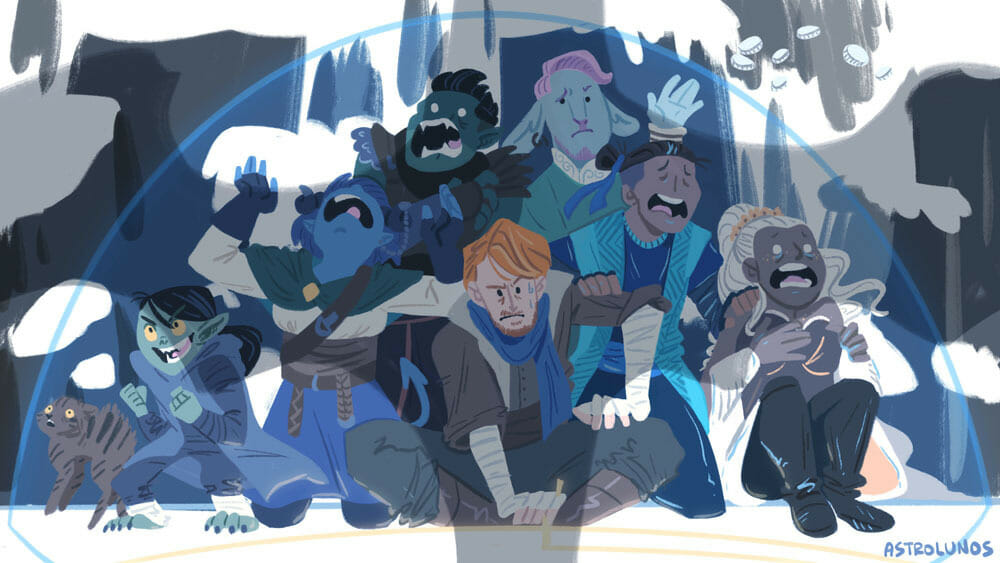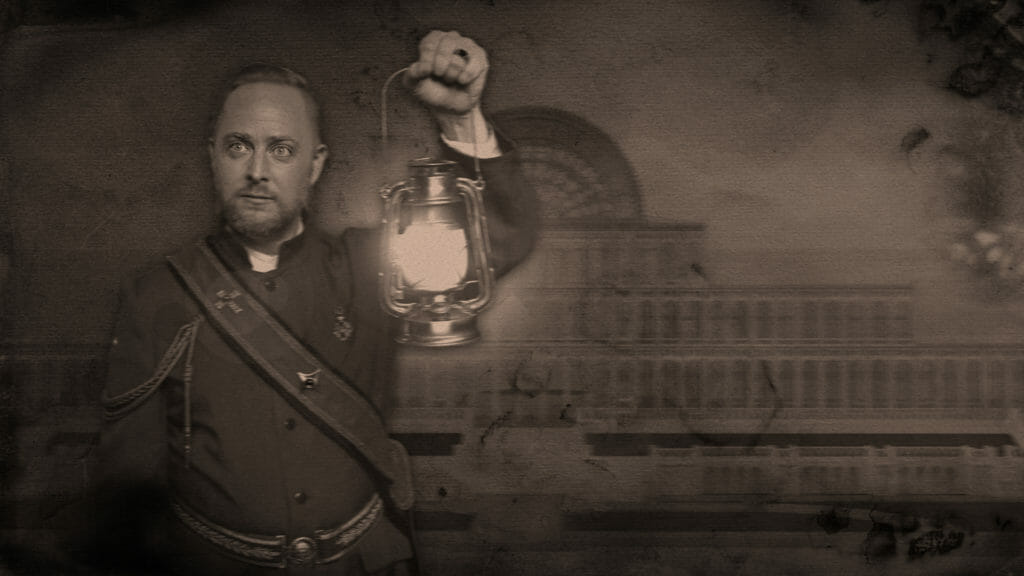Shadow of the Crystal Palace: The Setting
Written by Chris Lockey on August 21, 2019
Strange aeons are afoot at the Crystal Palace!
Welcome, intrepid reader: you’ve found the second of three articles exploring the world of Call of Cthulhu: Shadow of the Crystal Palace, our cosmic horror one-shot made in tandem with our friends at Chaosium. Previously, we offered a glimpse at the genesis of our incredible cast of investigators (including characters brought to life by Ashly Burch, Erika Ishii, Phil LaMarr, Liam O’Brien, Marisha Ray, and Travis Willingham). This time, we’re taking a look at the setting itself, along with several printed peripherals our beloved Keeper of Arcane Lore — the inimitable Taliesin Jaffe — has produced from the corners of his delightfully esoteric mind.
In case you missed it, Shadow of the Crystal Palace tasked an intrepid group of gaslight-era investigators with an epic heist that took a rather spooky and supernatural turn. Before reading any further, be sure to check out the full one-shot (spoiler warnings are in full effect). The scenario itself was designed to serve as a prequel of sorts to the “Edge of Darkness” scenario (featured in the Call of Cthulhu Starter Set), and takes place some 30 years or so prior to those events. The elder evil referenced in Chaosium’s “Edge of Darkness” was brought to murky life by Jaffe, who led our motley crew of sleuths on the adventure of a thousand lifetimes. But enough preamble, we’ll let Taliesin take over from here…
THE SETTING
The Crystal Palace: Originally built for the 1851 World’s Fair, I thought the unusual architecture and a multitude of reflective surfaces would be a great location for the game. There were plenty of odd secrets and strange bits of lore about the building that we didn’t tap into, but I like the notion that the building itself might be a giant spirit trap.

The Cat Show: Yes, there really were cat shows at the Crystal Palace — including the first year, and it was held at the end of October. The official minutes at the beginning of the game are based on notes and articles I found from the 1891 cat show. They were too good not to use.

The Illuminati: I love monster hunters, so the notion of a centuries-old society working to contain and battle the primordial enemies of man rock my fucking world.
THE PAPER PROPS
Dr. Pocket’s Pamphlet: A very short quarter-page I gave to Phil before the game. It gave him a general idea of his “world shadow” theory, sprinkled with some keywords that I hoped would lead him to interact with artifacts in certain ways. Much to my amazement, Phil took what I wrote and continually built on it throughout the game (and was dead-on correct way more often than not).

The Newspaper: Before the game, each player was given a “local paper” that included a bit of information everyone would have had about a few of the characters, including a historical advertisement for the cat show and a real article about Baroness Hayashi’s local jiu-jitsu class.

The Fountain Plaque: The plaque and the time capsule were invented, but the poem and poet were very real. This is just a few choice verses from “The Crystal Palace,” a poem written about this building by William Makepeace Thackeray.
The Notes from Gennai: The original idea was to procure a proper Japanese translation, but BOY we did not have time for that. A partial success would have given the players a note with a few helpful words translated, occasionally with several possible meanings (i.e. shadow / darkness / void).

The Automaton Fortunes: These were a mix of irritating sayings and slightly helpful clues, distributed randomly. Each time they used the automaton, the chances of it breaking increased by 10%. That would have been a thing. This was a gentle homage many of the classic automata of the age.
Call of Cthulhu: Shadow of the Crystal Palace originally aired Monday, July 29th on the Critical Role Twitch channel, and is available on-demand now for Twitch subscribers and via the Critical Role YouTube channel. Don’t forget to leave the light on…





